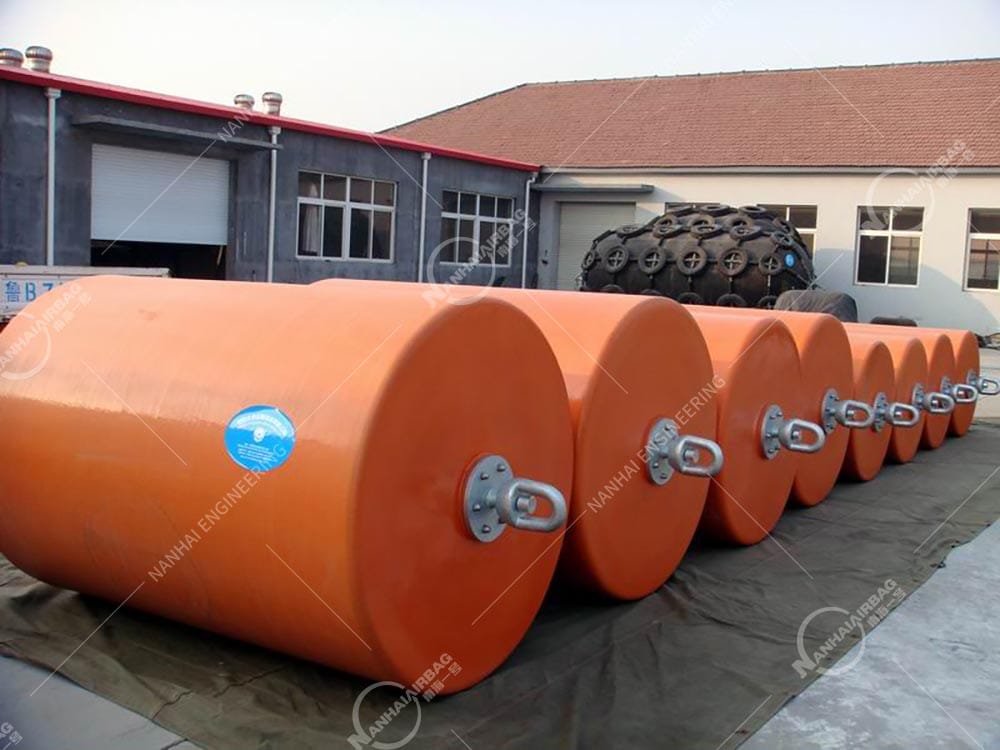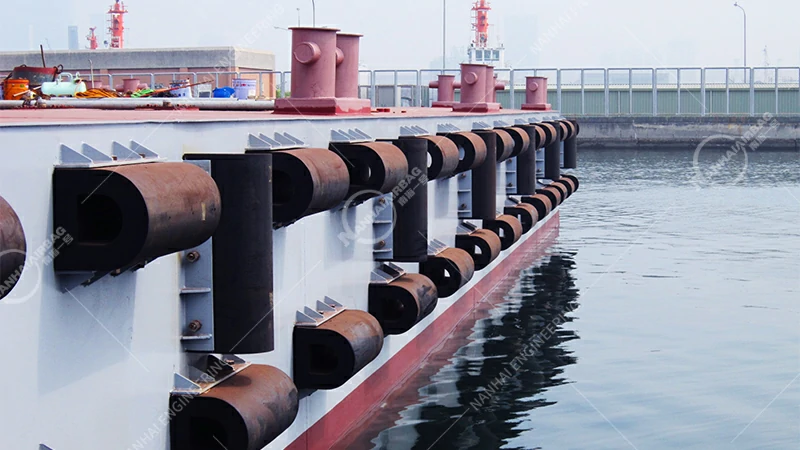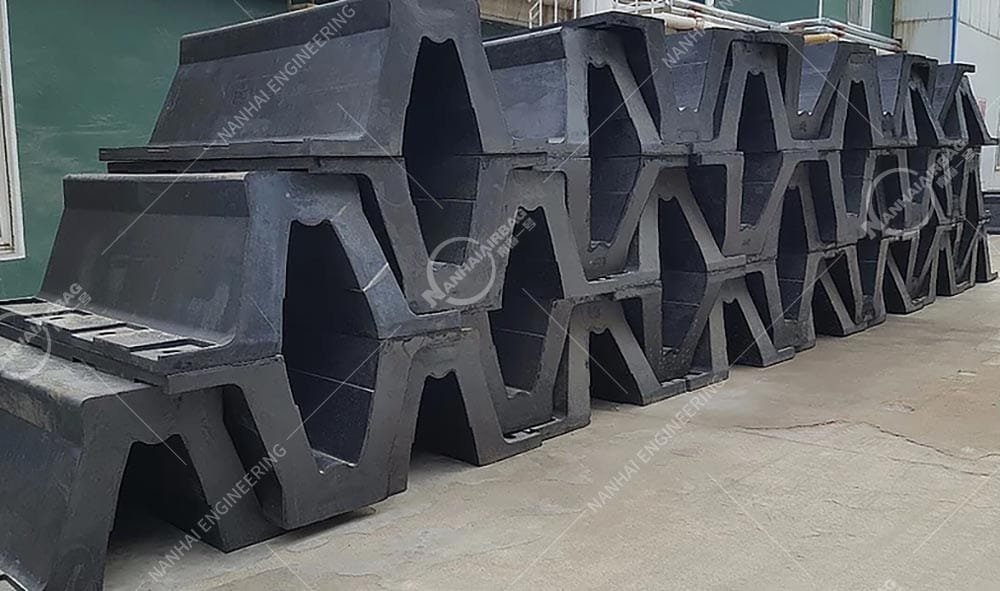Tindakan Pencegahan untuk Menggunakan Fender Pneumatik
02/26/2025Klasifikasi Fender Laut - Berdasarkan Bahan
02/28/2025




1.1 Pneumatic Fenders (Air Fenders)
- Deskripsi: Cylindrical or spherical fenders made of reinforced rubber and filled with compressed air.
- Types:
- Yokohama-Type Fenders: The most common type, featuring a cylindrical shape with rounded ends.
- Cell-Type Fenders: Smaller, doughnut-shaped fenders used for light-duty applications.
- Aplikasi: Ship-to-ship transfer, offshore mooring, and berthing of large vessels.
- Keuntungan: High energy absorption, lightweight, and easy to handle.
1.2 Foam-Filled Fenders
- Deskripsi: Fenders filled with closed-cell foam instead of air, providing buoyancy and energy absorption.
- Aplikasi: Permanent mooring, small boats, and floating structures.
- Keuntungan: No risk of deflation, low maintenance, and durable.
1.3 Solid Rubber Fenders
- Deskripsi: Made entirely of solid rubber, often with a robust outer layer and energy-absorbing core.
- Types:
- Fender Silinder: Simple cylindrical shapes for general-purpose use.
- Fender Tipe-D: Flat on one side and rounded on the other, ideal for dock walls.
- Fender Persegi: Rectangular shape for specific applications.
- Aplikasi: Ports, docks, and berthing structures.
- Keuntungan: High durability, resistant to abrasion, and low maintenance.
1.4 Cone Fenders
- Deskripsi: Cone-shaped fenders with a wide base and tapered top, often used in combination with other fender types.
- Aplikasi: Tugboats, ferries, and small vessels.
- Keuntungan: Excellent for low-energy impacts and easy to install.
1.5 Arch Fenders
- Deskripsi: Arch-shaped fenders with a curved design, providing a larger contact area.
- Aplikasi: Berthing of small to medium-sized vessels.
- Keuntungan: High energy absorption and uniform load distribution.





